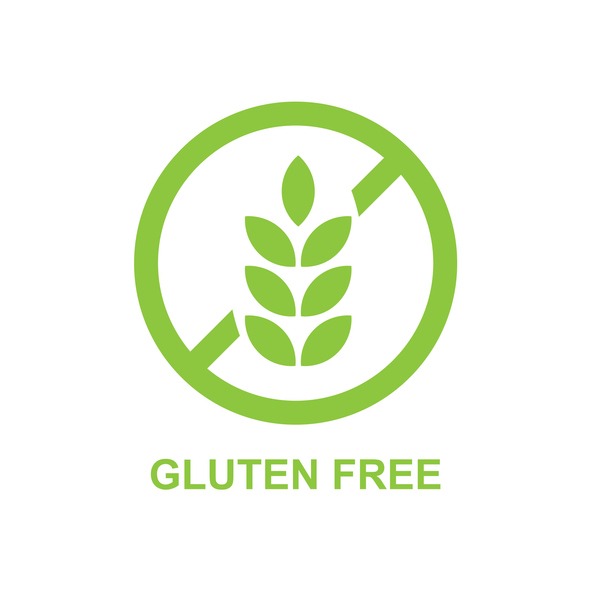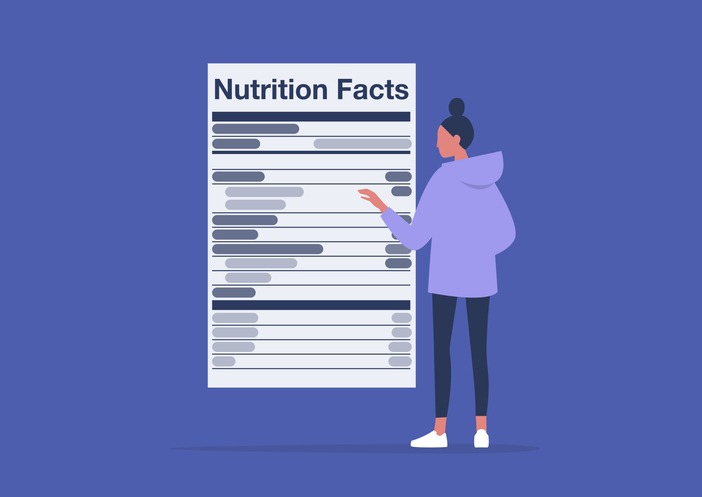Just as the Trojan Horse was not what it seemed, the world of food marketing is filled with deceptive practices that you’ve likely encountered without even realizing it. From buzzwords like ‘natural’ and ‘organic’ that don’t always mean what you think, to portion sizes that trick your perception, you’re navigating a minefield every time you shop.
By understanding the tactics used to sway your choices, you can arm yourself against these misleading messages. This discussion invites you to peel back the layers of food marketing, uncovering the truth behind the labels and claims that too often lead consumers astray.
The Buzzword Trap
Countless food products lure you in with buzzwords like ‘gluten-free’ and ‘organic,’ but these terms often mask the item’s true nutritional value. Food marketing has become adept at using such labels to paint a picture of health that may not align with reality. You’re drawn to products that boast being ‘whole-grain’ or ‘heart-healthy,’ believing you’re making a choice that’s good for your body. However, this can be misleading.
The health implications these buzzwords suggest aren’t always grounded in the product’s actual benefits. For example, a snack labeled as ‘gluten-free’ might still be high in sugar or artificial additives, making it far from a healthy option for most people. The deceptive packaging and marketing strategies exploit your desire to eat healthily, without delivering the nutritional value you’re seeking.
Psychological research has uncovered that certain words have the power to sway your perceptions significantly. You might trust a product more if its label reads ‘antioxidant-rich,’ even without understanding what that means for your health. It’s easy to fall into the buzzword trap, choosing foods based on their marketing appeal rather than their real contribution to your diet.
Deciphering Labels
Understanding how to read food labels is key to not being fooled by marketing tactics that suggest a product is healthier than it truly is. Misleading food marketing employs buzzwords like ‘gluten-free’, ‘organic’, or ‘antioxidant-rich’, creating a false perception of healthiness. You’re often drawn to products labeled with health-related terms, believing them to be healthier choices. However, without reading labels and understanding ingredient lists, you’re at risk of falling for deceptive tactics.
Consider these points when deciphering labels:
- Buzzwords aren’t guarantees: Words like ‘whole grain’ and ‘natural’ can mislead you into thinking a product is healthier than it actually is.
- Ingredient lists reveal the truth: The first few ingredients listed are the most telling about a product’s nutritional value.
- Packaging design influences choices: Bright colors and appealing images, especially on products marketed to children, can lead to unhealthy decisions.
- Consumer trust is often misplaced: Trusting health-related terms without scrutinizing the ingredient list can lead you to make less healthy consumer choices.
Organic Misconceptions
While many consumers buy organic products believing they’re making healthier choices, it’s crucial to note that an ‘organic’ label doesn’t always mean the food is low in sugar or unhealthy fats. Misleading food marketing often plays on words to create a false sense of health around organic foods, enticing you to choose them over non-organic counterparts without considering their actual nutritional content.
The reality is that organic labels primarily indicate the farming practices used, such as eschewing synthetic pesticides and fertilizers, rather than any inherent health benefit of the food itself. This means that organic foods can still be processed and loaded with added sugars, negating any perceived advantage. Therefore, reading nutritional labels and ingredient lists becomes paramount in making truly healthy food choices.
Don’t let the organic tag blind you to the real contents of what you’re eating. Consumers must look beyond organic labels and examine the ingredient lists to ensure they’re not just consuming organic junk food. Understanding the true meaning of organic and the importance of a balanced diet can help you navigate the often misleading world of food marketing more effectively.
Hidden Ingredients
Amid the myriad choices on supermarket shelves, it’s crucial you’re aware that some food products may contain hidden ingredients harmful to your health. Despite the allure of food packaging boasting health benefits, Misleading Marketing can mask the reality of what you’re actually consuming.
It’s good practice to delve beyond misleading claims by:
- Reading nutritional labels thoroughly to pinpoint artificial sweeteners like aspartame, which, despite their widespread use, may pose health risks.
- Being wary of products labeled as ‘natural’. These can harbor hidden sugars or additives not immediately obvious, undermining any perceived health benefit.
- Noting that ingredients are listed by quantity; hidden components like high fructose syrup might lurk further down the list, making them easy to overlook.
- Recognizing hidden trans fats in processed foods, which contribute to heart disease and obesity, are often not clearly disclosed on packaging.
A recent research study underscores the importance of consumers educating themselves on nutrition facts to avoid being duped by hidden ingredients. By taking the time for careful examination of food labels, you can ensure your dietary choices align with your health goals, safeguarding against the potential pitfalls of Misleading Marketing.
Portion Distortion
After exploring the hidden dangers in food ingredients, it’s also vital to address how portion distortion can impact your health. Portion distortion refers to the common mistake of underestimating the size of food portions you consume. This misjudgment isn’t just a minor oversight; it’s a significant factor that can lead to increased caloric intake, contributing to weight gain and obesity.
When you’re served larger portion sizes, whether in restaurants, fast food chains, or through packaged foods, there’s a strong tendency to eat more than necessary. This overeating, influenced by portion distortion, affects your overall health by nudging you further away from mindful eating practices. Research underscores how these exaggerated portions can subtly influence your eating habits, encouraging you to consume more without realizing it.
Being conscious of the portions on your plate is a crucial step towards combating this distortion. Practicing mindful eating can help you recognize true hunger cues and fullness, reducing the likelihood of overeating. By paying closer attention to portion sizes, you’re not just avoiding unnecessary caloric intake; you’re also taking a significant step to promote healthier eating habits, steering clear of the pitfalls of obesity and weight gain.
Visual Deceptions
Your perception of a food product’s healthiness can be significantly skewed by its packaging colors and design, leading you down a path of misleading choices. In the misleading world of food marketing, visual deceptions play a crucial role in shaping consumer choices, often leaving you with inaccurate information regarding what’s truly healthy.
Here are a few ways visual deceptions manifest:
- Attractive packaging often masks the less desirable nutritional aspects of a product, making it appear healthier than it is.
- Health buzzwords like ‘gluten-free’ or ‘vegan’ are strategically placed to capture your attention, despite not always indicating a healthier choice.
- The deceptive nature of food marketing can lead you to overlook high sugar content in products labeled as high in fiber.
- Misleading perceptions are further fueled by claims of being ‘natural’ or ‘whole food’, which can be vague and lack clear standards.
To navigate the misleading food marketing landscape, it’s essential to look beyond the attractive packaging and understand food claims critically. Don’t let the deceptive nature of visual deceptions dictate your food choices; instead, focus on the factual content of food labels for a clearer picture of what you’re consuming.
Navigating Health Claims
Navigating health claims on food packaging requires a keen eye, as these labels often present a distorted picture of the product’s true nutritional value. Terms like ‘gluten-free,’ ‘organic,’ and ‘natural’ might catch your attention, but they don’t always mean you’re making a healthier choice. It’s easy to fall into the trap of trusting these health claims, believing the products are better for you.
Understanding what truly benefits your health involves digging deeper than the surface. Reading nutritional labels is key to uncovering the reality behind the health claims that seem so promising. This approach helps you see past the marketing buzzwords that are designed to lure you in. Remember, just because a label shouts a health benefit, doesn’t make it a healthier option. These claims can be misleading, if not downright deceptive.
Making informed choices about what you eat means navigating through these food labels with a critical eye. It’s about understanding the difference between genuine health claims and those that are marketing tactics. By doing so, you’re not just feeding your body; you’re nourishing your knowledge and empowering yourself to cut through the noise of deceptive advertising.
Conclusion
You’ve ventured through the maze of food marketing, spotting the traps along the way. From buzzwords that mislead to labels that confuse, and misconceptions that deceive, you’re now better equipped. Remember, it’s about making informed choices, seeing beyond the visual tricks, and understanding what’s truly behind health claims.
Don’t let portion distortion catch you off guard. Armed with knowledge, you can sidestep the marketing tactics and choose foods that genuinely align with your health and ethical values.





